Marketing
5 Menu Description Tips To Drive More Sales
April 12, 2024
There’s a science behind effective menu writing. Here’s what you need to know.
Hospitality is a competitive industry, and every edge counts. You’re constantly seeking ways to stand out in a crowded market and keep your customers coming back for more. One of the most powerful tools at your disposal? The menu description.
These seemingly small blurbs can have a big impact on your bottom line, and they matter a lot to diners. In fact, a survey from US Foods showed that 65% of diners cited the menu description as the most important consideration in selecting a dish.
Read on to learn more about the importance (and underestimated power) of menu descriptions plus tips on how to craft compelling ones for your own restaurant.
Why Menu Descriptions are Important
Not only do effective menu descriptions help diners make informed choices, they also play a big role in cutting down on food waste and boosting revenue. Here are the three key things to know.
Lead to more satisfied customers.
Research shows that 79% of Americans have a difficult time deciding what to order when looking at a restaurant menu. Menu descriptions provide information about the dishes offered, including ingredients and preparation methods. This helps customers make informed decisions based on their preferences and dietary restrictions. When they are well-written, menu descriptions can also make it easier and faster for diners to make a choice. It’s a win-win for all parties involved: less deliberation and more excitement for diners, faster turn times for restaurants.
Help reduce food waste.
Food waste is a serious problem in the hospitality industry. Restaurants generate 13 million tons of surplus food each year. Nearly 70% of the total surplus comes from plate waste, which is the food that customers have been served but don’t eat. When guests feel confident in their order, they are less inclined to waste it.
Read more: How to Minimize Restaurant Food Waste
Increase sales.
Compelling menu descriptions can entice customers to try new dishes or order additional items. Details about the quality of the dish, as well as what makes it unique, helps justify higher prices in the minds of diners. It also improves the perception of value, encouraging guests to spend more.
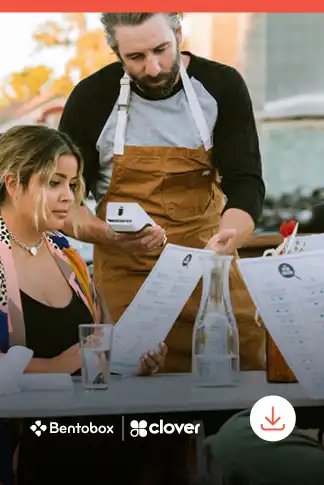
RESOURCE
Restaurant Menu Design & Copywriting
In this e-book, you'll find detailed tips for visual menu design, specific suggestions on menu copywriting and real menu examples from BentoBox customers.
How to Write Menu Descriptions (with Examples)
The way you describe each dish on your menu can have a big impact on your food sales. Here’s your guide to writing clear, vivid, and enticing menu descriptions.
1. Be specific.
The more precise you can be in your descriptions, the better. Clear yet concise language is a tough balancing act. A great example of this tactic is on the menu of High Cotton in Charleston, SC.
"Intricate marbling" and "rich buttery flavor" paint a vivid picture of the dish, helping customers visualize both the quality and taste they should expect if ordering. Lastly, “carved” communicates how the steak will show up on the plate so that diners aren’t surprised.
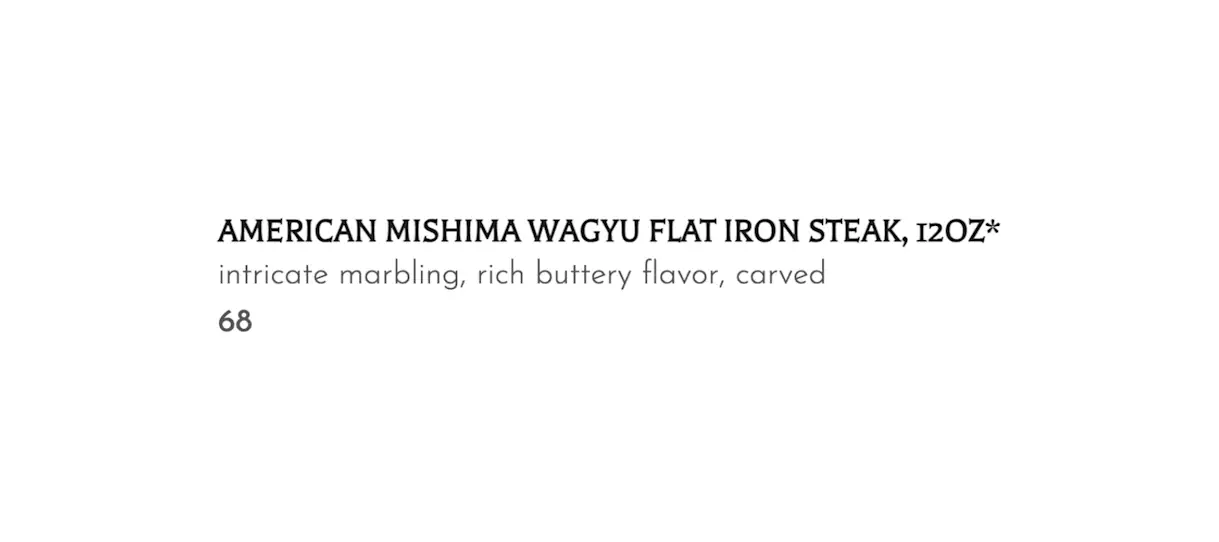
2. Highlight key ingredients.
Consider calling out specific brands in your menu descriptions, especially if they are well-known and customers have a positive association with them. On Homegrown Tap & Dough’s menu in Denver, CO, the description for the Chocolate Chip Cookie Skillet strategically mentions Ghirardelli and Heath instead of simply stating “chocolate chunk cookie” or “toffee candy crumbles.”
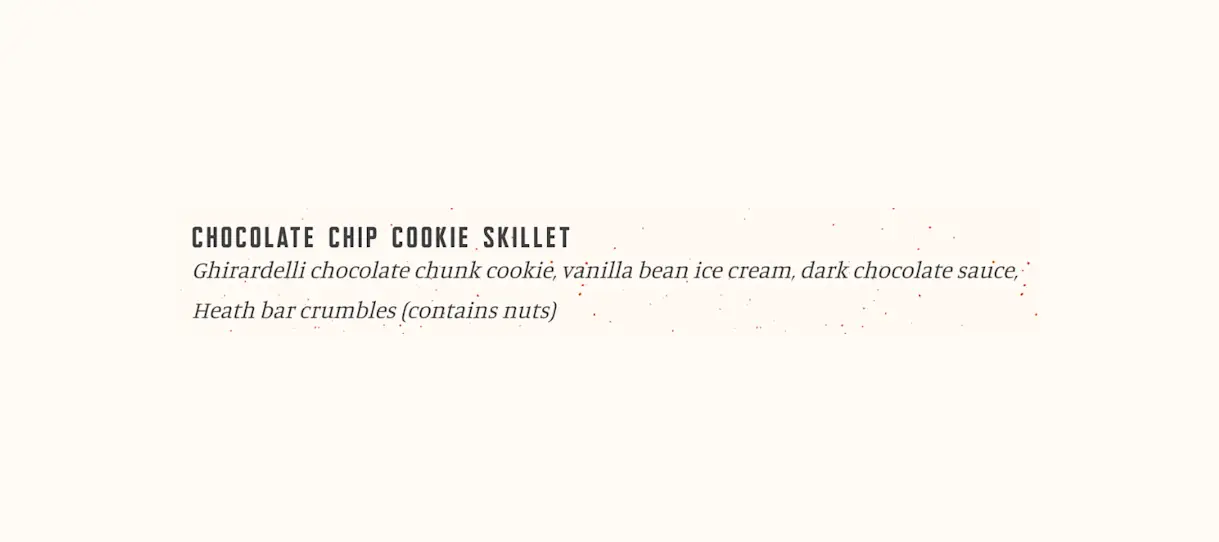
3. Use descriptive words.
Using detailed language for your dishes increases sales by 27%, according to the Food and Brand Lab at Cornell University. This is a good opportunity to include where you source your ingredients, specifically what local farms you support. Include descriptive verbs and adjectives to provide a visual and textural guide to each dish.
Ultimately your goal is to create an experience in which a diner can’t resist ordering a dish because the description sounds so good. For example, Residents Café & Bar in Washington D.C. features Cinnamon Bun Pancakes on their menu. Rather than simply listing out the ingredients of the dish, the restaurant team added descriptive words like candied, whipped, and cinnamon fused.
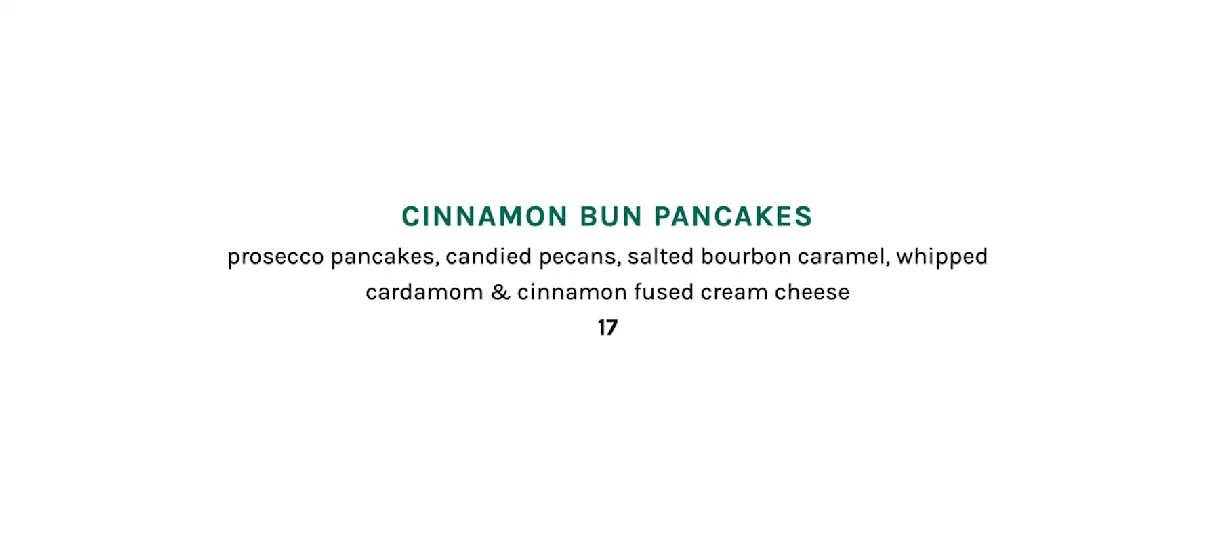
4. Emphasize preparation methods.
Restaurants can convey the level of skill and attention to detail that goes into creating each dish by showcasing how items are prepared. It also helps differentiate common dishes that are seen on many menus. At Ox Restaurant in Portland, OR, one of the menu items could have simply been named Brussels Sprouts. However, action-oriented language like “flash-fried” creates a dynamic beginning to the dish title and adds a level of intrigue and excitement. The main flavor of the dish (salt & vinegar) is also present in the name with supporting flavors outlined in the description underneath.
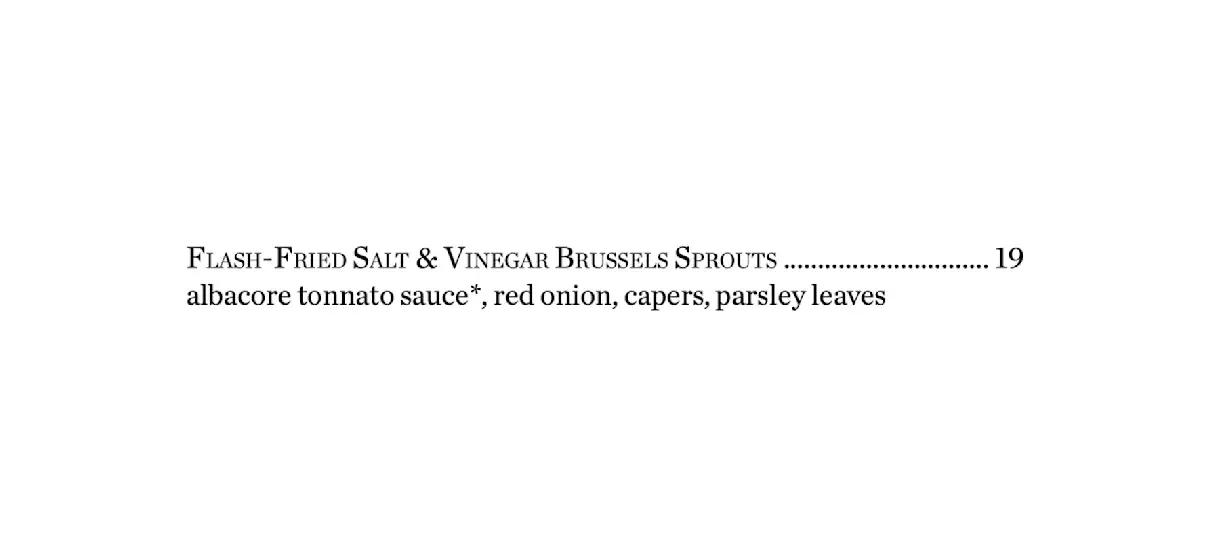
5. Ditch the $ sign.
Studies have shown that guests tend to order cheaper items when dollar signs are placed next to the price. Keep prices rounded to the nearest dollar. This keeps your menu neat and organized and allows guests to focus on the dish descriptions and not get distracted by the price.
We also recommend adding prices directly next to the menu descriptions. It’s a trick that will keep guests less focused on prices and more focused on all of the appealing items you offer. Colletta in Alpharetta, GA uses this technique on its menu.
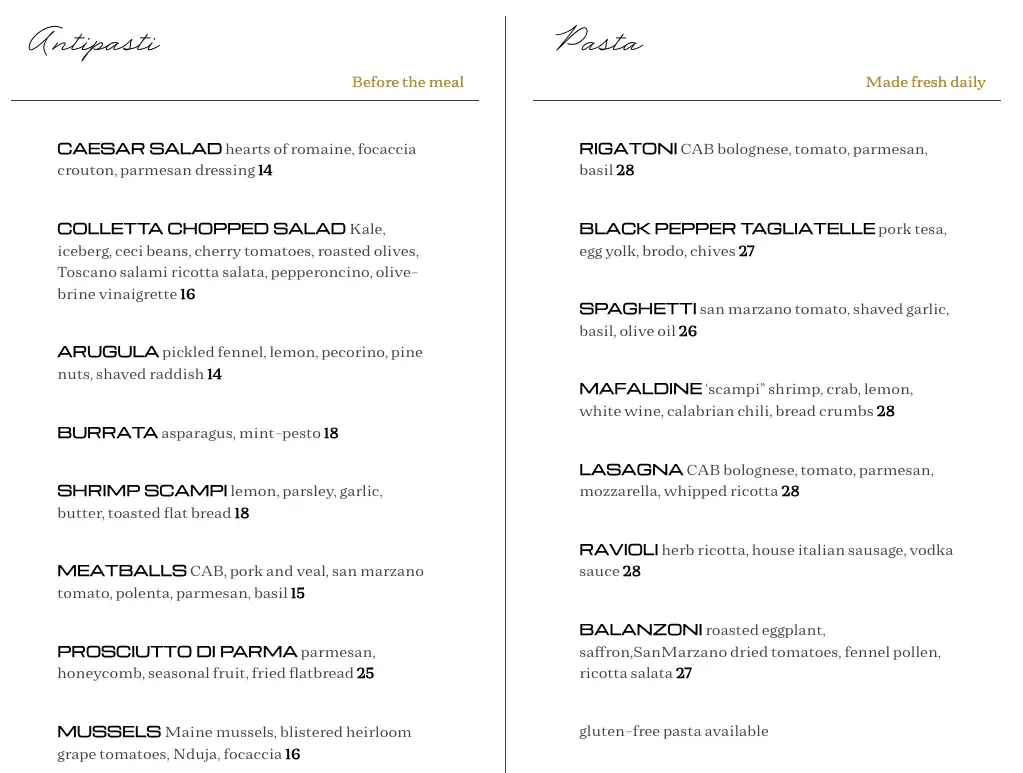
Menu Description Resources
Looking for more inspiration for your menu? Check out these resources:

BentoBox Marketing & Commerce Platform
Deliver Smarter Hospitality
Want to stand out online, bring in more money, engage your diners, and streamline operations?
Recommended

Holidays
8 Ideas for Restaurant Holiday Promotions & Events
October 5, 2021
Check out these examples of restaurant events, and see if they make sense for your upcoming holiday plan.
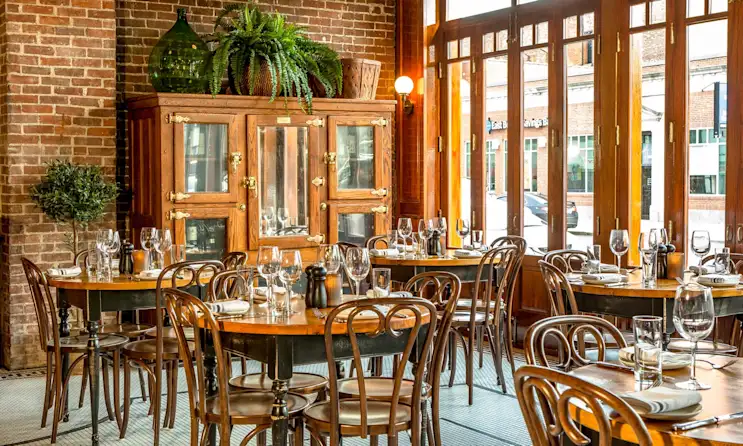
Marketing
10 Unique Restaurant Promotion Ideas to Boost Sales
September 12, 2024
Special offers are a great strategy for getting more diners through your door.

Marketing
27 Subject Line Ideas for Your Restaurant Emails
December 1, 2022
Boost your email marketing strategy and improve your open rates with better subject lines. Plus, learn what types of restaurant emails you should be sending.


